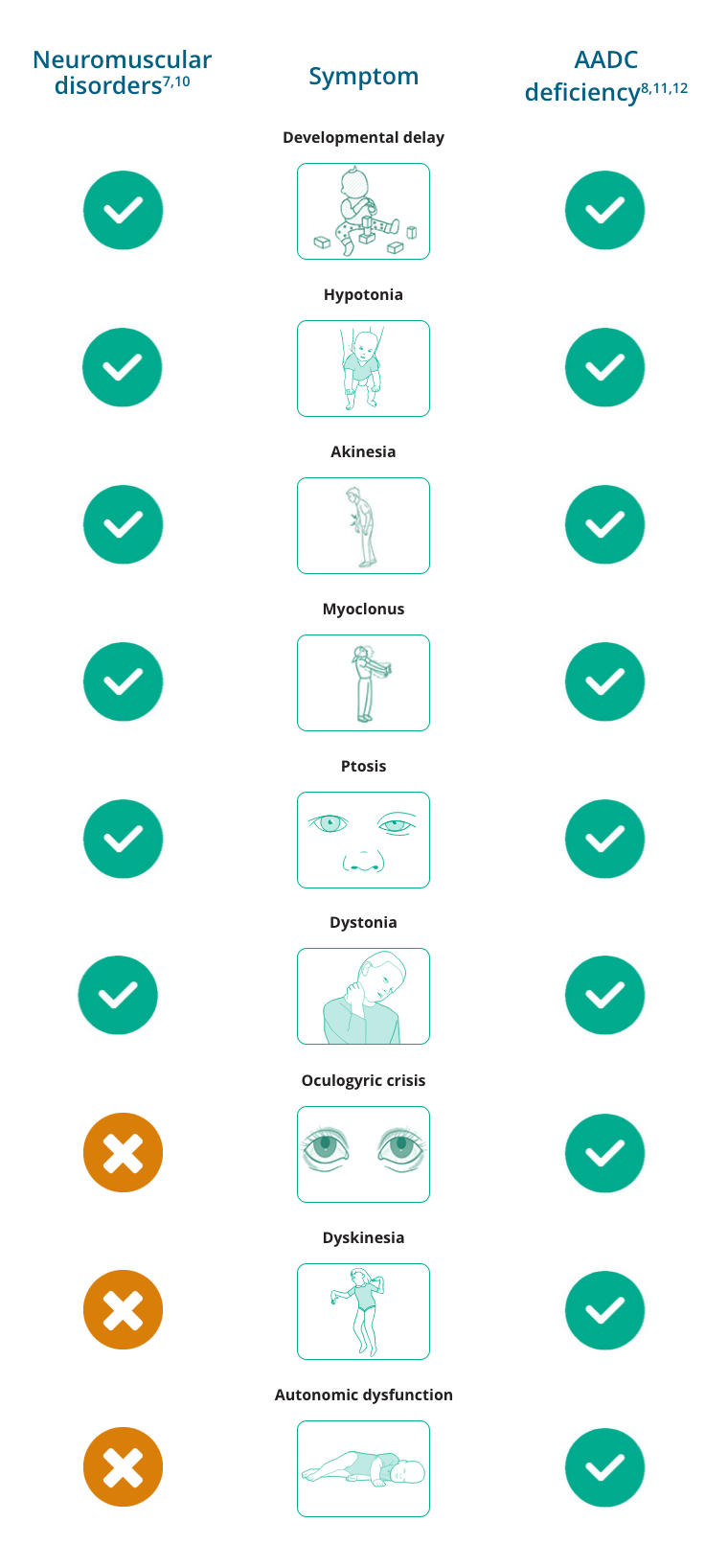What are neuromuscular disorders?
- Neuromuscular disorders are a broad group of genetic heterogeneous diseases that impair muscle function and/or the peripheral nervous system1–3
- Impairment can arise in cell bodies (i.e. amyotrophic lateral sclerosis [ALS] or sensory ganglionopathies), axons (i.e. axonal peripheral neuropathies or brachial plexopathies), Schwann cells (i.e. chronic inflammatory demyelinating polyradiculoneuropathy), neuromuscular junctions (i.e. myasthenia gravis or Lambert-Eaton myasthenic syndrome), muscle tissue (i.e. inflammatory myopathy or muscular dystrophy), or at any combination of these sites4
- Neuromuscular disorders vary in disease course and severity,5 depending on the body area affected. Typical symptoms include muscle weakness, abnormal or impaired ambulation, joint contractures, skeletal deformities, altered sensory perception (in neuropathies) and respiratory failure1
- Myalgia, rhabdomyolysis and fatigable weakness may occur with normal intervening muscle function, or in individuals with persistent neuromuscular manifestations1
Types of neuromuscular disorders
Types of neuromuscular disorders include (not an exhaustive list):1,6
- ALS
- Charcot-Marie-Tooth disease
- Multiple sclerosis
- Muscular dystrophy
- Myasthenia gravis
- Myopathy
- Myositis, including polymyositis and dermatomyositis
- Peripheral neuropathy
- Spinal muscular atrophy
Overlapping and differentiating symptoms of neuromuscular disorders and AADC deficiency
- The majority of patients with AADC deficiency present with movement disorders (hypokinesia, chorea, dystonia, ballismus, dyskinesia, tremor, myoclonus). AADC deficiency can mimic many neuromuscular disorders, such as congenital myasthenia gravis, leading to challenges in diagnosis7–9
Overlapping and differentiating symptoms of neuromuscular disorders and AADC deficiency:

AADC, aromatic L-amino acid decarboxylase; ALS, amyotrophic lateral sclerosis.
-
- Dowling JJ, et al. Am J Med Genet A. 2018;176:804–841.
- van Putten M, et al. Dis Model Mech. 2020;13:dmm044370.
- Mary P, Servais L, Vialle R. Orthop Traumatol Surg Res. 2018;104:S89–S95.
- Morrison B. Semin Neurol. 2016;36:409–418.
- Sáez A, et al. J of Biomedical Optics. 2013;18:066017.
- Deenen JC, et al. J Neuromuscul Dis. 2015;2:73–85.
- Kurian MA, Dale RC. Continuum (Minneap Minn). 2016;22(4):1159–1185.
- Ng J, et al. Nat Rev Neurol. 2015;11,567–584.
- Pearson TS, et al. J Inherit Metab Dis. 2020;43:1121–1130.
- Kaler J, et al. Cureus. 2020;12(2):e6922.
- Manegold C, et al. J Inherit Metab Dis. 2009;32:371–380.
- Wassenberg T, et al. Orphanet J Rare Dis. 2017;12:12.
Explore interactive clinical case studies
GL-AADC-1029 | April 2022
